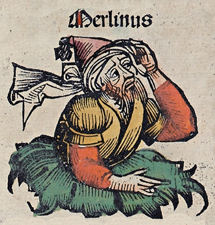|
Mullard Radio Astronomy Observatory
The Mullard Radio Astronomy Observatory (MRAO) is located near Cambridge, UK and is home to a number of the largest and most advanced aperture synthesis radio telescopes in the world, including the One-Mile Telescope, 5-km Ryle Telescope, and the Arcminute Microkelvin Imager. It was founded by the University of Cambridge and is part of the Cambridge University, Cavendish Laboratories, Astrophysics Department. History Radio interferometry started in the mid-1940s on the outskirts of Cambridge, but with funding from the Science Research Council and a corporate donation of £100,000 from Mullard Limited, a leading commercial manufacturer of thermionic valves. Construction of the Mullard Radio Astronomy Observatory commenced at Lords Bridge Air Ammunition Park, a few kilometres to the west of Cambridge. The observatory was founded under Martin Ryle of the Radio-Astronomy Group of the Cavendish Laboratory, University of Cambridge and was opened by Sir Edward Victor Appleton ... [...More Info...] [...Related Items...] OR: [Wikipedia] [Google] [Baidu] |
Varsity Line
The Varsity Line (or the Oxford to Cambridge railway line) was the main railway route that once linked the English university cities of Oxford and Cambridge, operated by the London and North Western Railway. During World War II the line was adopted as a strategic route for freight avoiding London, and additional connections were made to nearby lines to improve the utility of the route. Despite that, the route was not greatly used for its intended purpose. After the war, the line was again scheduled to be developed as a strategic route, but that scheme was never fully implemented either. Passenger services were withdrawn from most of the line on 1 January 1968, and only the Bletchley–Bedford section remained open for passenger traffic. In 1987, the section between Oxford and Bicester was reopened, followed in 2015 by a connection to the Chiltern Main Line at Bicester, enabling Chiltern Railways to operate an Oxford to London passenger service. There are funded plans for ... [...More Info...] [...Related Items...] OR: [Wikipedia] [Google] [Baidu] |
4C Array
The 4C Array is a cylindrical paraboloid radio telescope at the Mullard Radio Astronomy Observatory, near Cambridge, England. It is similar in design to the Molonglo Observatory Synthesis Telescope. It is 450 m long, 20 m wide, with a second, moveable element (now mostly removed; some of it is still visible, beyond COAST). The first large aperture synthesis telescope (1958), it was also the first new instrument to be built at Lord's Bridge, after the Observatory An observatory is a location used for observing terrestrial, marine, or celestial events. Astronomy, climatology/meteorology, geophysical, oceanography and volcanology are examples of disciplines for which observatories have been constructed. H ... was moved there in 1957, and needed of reflector wire (since removed). The 4C operated at 178 MHz (1.7 m), and located nearly 5000 sources of the 4C (4th Cambridge) catalogue published in 1965 and 1966, which helped establish the evolution of the radio galaxy popula ... [...More Info...] [...Related Items...] OR: [Wikipedia] [Google] [Baidu] |
CP 1919
PSR B1919+21 is a pulsar with a period of 1.3373 seconds and a pulse width of 0.04 seconds. Discovered by Jocelyn Bell Burnell on 28 November 1967, it is the first discovered radio pulsar. The power and regularity of the signals were briefly thought to resemble an extraterrestrial beacon, leading the source to be nicknamed LGM, later LGM-1 (for "little green men"). The original designation of this pulsar was CP 1919, which stands for Cambridge Pulsar at RA . It is also known as PSR J1921+2153 and is located in the constellation of Vulpecula. Discovery In 1967, a radio signal was detected using the Interplanetary Scintillation Array of the Mullard Radio Astronomy Observatory in Cambridge, UK, by Jocelyn Bell Burnell. The signal had a -second period and 0.04-second pulsewidth. It originated at celestial coordinates right ascension, +21° declination. It was detected by individual observation of miles of graphical data traces. Due to its almost perfect ... [...More Info...] [...Related Items...] OR: [Wikipedia] [Google] [Baidu] |
Interplanetary Scintillation Array
The Interplanetary Scintillation Array (also known as the IPS Array or Pulsar Array) is a radio telescope that was built in 1967 at the Mullard Radio Astronomy Observatory, in Cambridge, United Kingdom, and was operated by the Cavendish Astrophysics Group. The instrument originally covered 4 acres (16,000 m²). It was enlarged to 9 acres in 1978, and was refurbished in 1989. The array operates at a radio frequency of 81.5 MHz (3.7 m wavelength), and is made up of 4,096 dipole antennas in a phased array. Using 14 beams, it can map the northern sky in one day. The observatory's staff use sheep to keep grass away from the antennas because a lawn mower cannot fit in the spaces. Antony Hewish designed the IPS Array to measure the high-frequency fluctuations of radio sources, originally for monitoring interplanetary scintillation. Hewish received a Nobel prize after the high time-resolution of the array allowed the detection of pulsars A pulsar (from ''pulsating radio ... [...More Info...] [...Related Items...] OR: [Wikipedia] [Google] [Baidu] |
Half-Mile Telescope
The Half-Mile Telescope was constructed in 1968 (2 aerials) at the Mullard Radio Astronomy Observatory with two more aerials being added in 1972, using donated dishes (total cost was £70,000). Two of the dishes are fixed, while two are moveable and share the One-Mile's rail track; to obtain information from the maximum number of different baselines, 30 days of observing were required. Observing frequency 1.4 GHz (21 cm wavelength), bandwidth 4 MHz. Used for Hydrogen Line studies of nearby galaxies and produced the first good radio maps of hydrogen distribution (as a function of its velocity), for M33 and M31 (also produced nearly 20 PhDs and 50 published papers). The telescope was operated by the Radio Astronomy Group of the Cambridge University , mottoeng = Literal: From here, light and sacred draughts. Non literal: From this place, we gain enlightenment and precious knowledge. , established = , other_name = The Ch ... [...More Info...] [...Related Items...] OR: [Wikipedia] [Google] [Baidu] |
E-MERLIN
Merlin ( cy, Myrddin, kw, Marzhin, br, Merzhin) is a mythical figure prominently featured in the legend of King Arthur and best known as a mage, with several other main roles. His usual depiction, based on an amalgamation of historic and legendary figures, was introduced by the 12th-century British author Geoffrey of Monmouth. It is believed that Geoffrey combined earlier tales of Myrddin and Ambrosius, two legendary Briton prophets with no connection to Arthur, to form the composite figure called Merlinus Ambrosius ( cy, Myrddin Emrys, br, Merzhin Ambroaz). Geoffrey's rendering of the character became immediately popular, especially in Wales. Later writers in France and elsewhere expanded the account to produce a fuller image, creating one of the most important figures in the imagination and literature of the Middle Ages. Merlin's traditional biography casts him as an often-mad being born of a mortal woman, sired by an incubus, from whom he inherits his supernatural pow ... [...More Info...] [...Related Items...] OR: [Wikipedia] [Google] [Baidu] |
Optical
Optics is the branch of physics that studies the behaviour and properties of light, including its interactions with matter and the construction of instruments that use or detect it. Optics usually describes the behaviour of visible, ultraviolet, and infrared light. Because light is an electromagnetic wave, other forms of electromagnetic radiation such as X-rays, microwaves, and radio waves exhibit similar properties. Most optical phenomena can be accounted for by using the classical electromagnetic description of light. Complete electromagnetic descriptions of light are, however, often difficult to apply in practice. Practical optics is usually done using simplified models. The most common of these, geometric optics, treats light as a collection of rays that travel in straight lines and bend when they pass through or reflect from surfaces. Physical optics is a more comprehensive model of light, which includes wave effects such as diffraction and interference that can ... [...More Info...] [...Related Items...] OR: [Wikipedia] [Google] [Baidu] |
Cambridge Optical Aperture Synthesis Telescope
COAST, the Cambridge Optical Aperture Synthesis Telescope, is a multi-element optical astronomical interferometer with baselines of up to 100 metres, which uses aperture synthesis to observe stars with angular resolution as high as one thousandth of one arcsecond (producing much higher resolution images than individual telescopes, including the Hubble Space Telescope). The principal limitation is that COAST can only image bright stars. COAST was the first long-baseline interferometer to obtain high-resolution images of the surfaces of stars other than Sun (although the surfaces of other stars had previously been imaged at lower resolution using aperture masking interferometry on the William Herschel Telescope). The COAST array was conceived by John E. Baldwin and is operated by the Cavendish Astrophysics Group. It is situated at the Mullard Radio Astronomy Observatory in Cambridgeshire, England. See also * List of observatories * List of telescope types The following are ... [...More Info...] [...Related Items...] OR: [Wikipedia] [Google] [Baidu] |
Cosmic Microwave Background
In Big Bang cosmology the cosmic microwave background (CMB, CMBR) is electromagnetic radiation that is a remnant from an early stage of the universe, also known as "relic radiation". The CMB is faint cosmic background radiation filling all space. It is an important source of data on the early universe because it is the oldest electromagnetic radiation in the universe, dating to the epoch of recombination when the first atoms were formed. With a traditional optical telescope, the space between stars and galaxies (the background) is completely dark (see: Olbers' paradox). However, a sufficiently sensitive radio telescope shows a faint background brightness, or glow, almost uniform, that is not associated with any star, galaxy, or other object. This glow is strongest in the microwave region of the radio spectrum. The accidental discovery of the CMB in 1965 by American radio astronomers Arno Penzias and Robert Wilson was the culmination of work initiated in the 1940s, and ear ... [...More Info...] [...Related Items...] OR: [Wikipedia] [Google] [Baidu] |
Cosmic Anisotropy Telescope
The Cosmic Anisotropy Telescope (CAT) was a three-element interferometer for cosmic microwave background radiation (CMB/R) observations at 13 to 17 GHz, based at the Mullard Radio Astronomy Observatory. In 1995, it was the first instrument to measure small-scale structure in the cosmic microwave background. When the more sensitive Very Small Array came online, the CAT telescope was decommissioned in a ceremonial bonfire. External links Cosmic Anisotropy Telescope (CAT) onlineThe first detection of small-scale structurein the cosmic microwave background * ttps://maps.google.com/maps?q=Cambridge&ll=52.165135,0.037379&spn=0.005643,0.007811&t=k&hl=en The CAT enclosureon Google Maps Google Maps is a web mapping platform and consumer application offered by Google. It offers satellite imagery, aerial photography, street maps, 360° interactive panorama, interactive panoramic views of streets (Google Street View, Street View ... Cavendish Laboratory Radio telescopes Interfe ... [...More Info...] [...Related Items...] OR: [Wikipedia] [Google] [Baidu] |
Tenerife
Tenerife (; ; formerly spelled ''Teneriffe'') is the largest and most populous island of the Canary Islands. It is home to 43% of the total population of the Archipelago, archipelago. With a land area of and a population of 978,100 inhabitants as of January 2022, it is also the most populous island of Spain and of Macaronesia. Approximately five million tourists visit Tenerife each year; it is the most visited island in the archipelago. It is one of the most important tourist destinations in Spain and the world, hosting one of the world's largest carnivals, the Carnival of Santa Cruz de Tenerife. The capital of the island, , is also the seat of the island council (). That city and are the co-capitals of the autonomous community of the Canary Islands The Canary Islands (; es, Canarias, ), also known informally as the Canaries, are a Spanish autonomous community and archipelago in the Atlantic Ocean, in Macaronesia. At their closest point to the African mainland, they ... [...More Info...] [...Related Items...] OR: [Wikipedia] [Google] [Baidu] |







